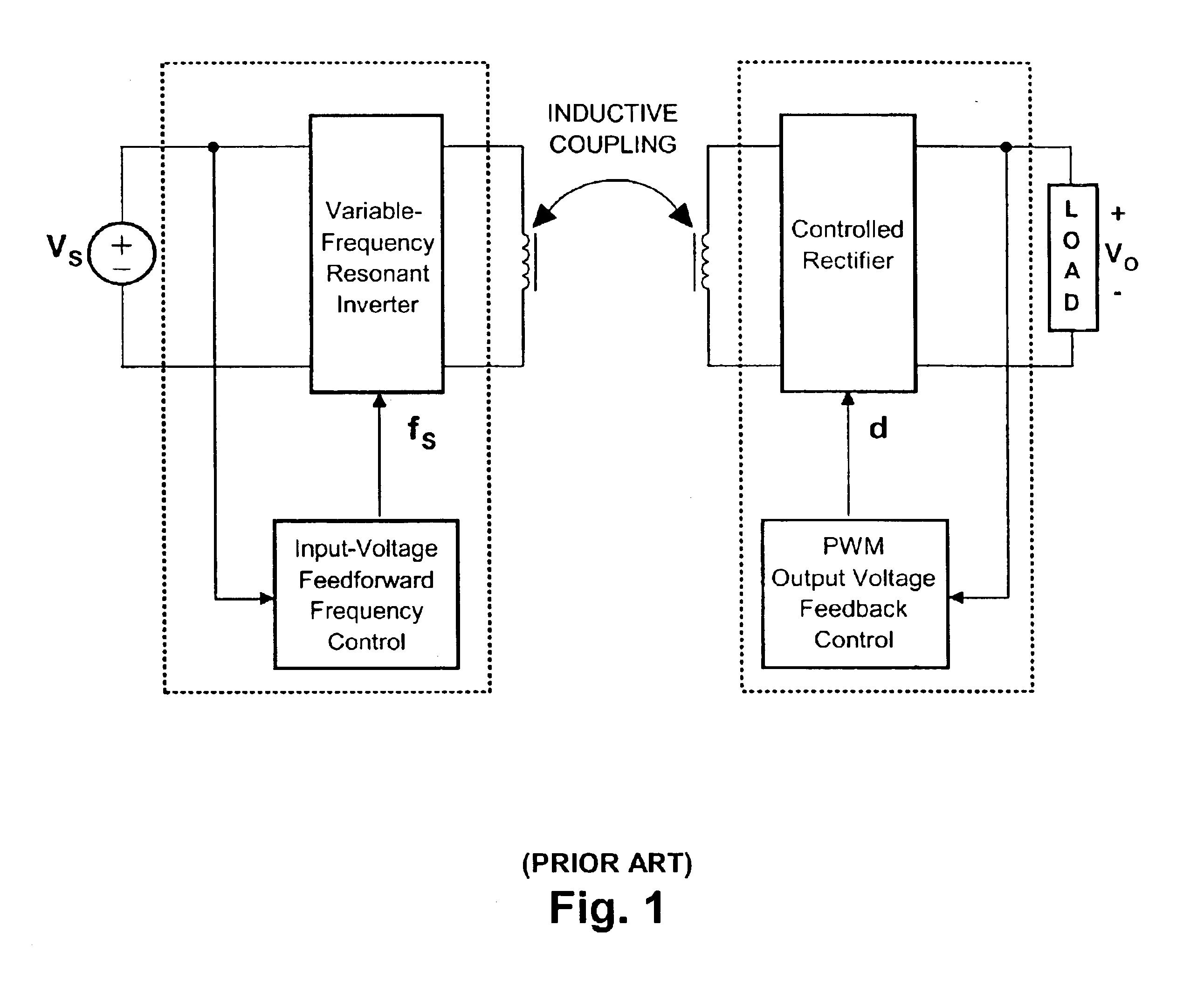Contactless electrical energy transmission system having a primary side current feedback control and soft-switched secondary side rectifier
a technology of contactless electrical energy transmission and feedback control, which is applied in the direction of electrical variable regulation, process and machine control, instruments, etc., can solve the problems of low efficiency and unregulated delivery of power to load, low parasitic ringing and loss, and power transmission via inductive coupling of ceet transformers. achieve the effect of constant energy transfer
- Summary
- Abstract
- Description
- Claims
- Application Information
AI Technical Summary
Benefits of technology
Problems solved by technology
Method used
Image
Examples
Embodiment Construction
[0021]FIG. 3 shows an exemplary block diagram of the CEET system in accordance with the present invention. The system of FIG. 3 includes a variable frequency resonant inverter at a primary side and a controlled rectifier at a secondary side that includes a load. The primary side and secondary side are inductively coupled through the primary and secondary windings of a transformer. As shown, the inverter couples a power source having a power voltage VS to the primary winding through a primary resonant circuit comprising inductive and capacitive elements in the primary side. As described later in detail, a primary-current feed back frequency control block controls a primary switching frequency for regulating the power transfer between the primary and secondary sides. On the secondary side, the rectifier, which is a controlled zero-voltage switching (ZVS) rectifier, couples the secondary winding to a load through a secondary resonant circuit comprising inductive and capacitive elements...
PUM
 Login to View More
Login to View More Abstract
Description
Claims
Application Information
 Login to View More
Login to View More - R&D
- Intellectual Property
- Life Sciences
- Materials
- Tech Scout
- Unparalleled Data Quality
- Higher Quality Content
- 60% Fewer Hallucinations
Browse by: Latest US Patents, China's latest patents, Technical Efficacy Thesaurus, Application Domain, Technology Topic, Popular Technical Reports.
© 2025 PatSnap. All rights reserved.Legal|Privacy policy|Modern Slavery Act Transparency Statement|Sitemap|About US| Contact US: help@patsnap.com



